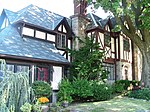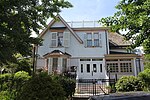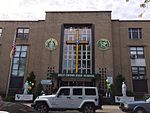Flushing, Queens

Flushing is a neighborhood in the north-central portion of the New York City borough of Queens. The neighborhood is the fourth-largest central business district in New York City. Downtown Flushing is a major commercial and retail area, and the intersection of Main Street and Roosevelt Avenue at its core is the third-busiest in New York City, behind Times Square and Herald Square.Flushing was established as a settlement of New Netherland on October 10, 1645, on the eastern bank of Flushing Creek. It was named Vlissingen, after the Dutch city of Vlissingen. The English took control of New Amsterdam in 1664, and when Queens County was established in 1683, the "Town of Flushing" was one of the original five towns of Queens. In 1898, Flushing was consolidated into the City of New York. Development came in the early 20th century with the construction of bridges and public transportation. An immigrant population, composed mostly of Chinese and Koreans, settled in Flushing in the late 20th century. Flushing contains numerous residential subsections, and its diversity is reflected by the numerous ethnic groups that reside there. Flushing is served by several stations on the Long Island Rail Road's Port Washington Branch, as well as the New York City Subway's IRT Flushing Line (7 and <7> trains), which has its terminus at Main Street. Flushing is located in Queens Community District 7, and its ZIP Codes are 11354, 11355, and 11358. It is patrolled by the New York City Police Department's 109th Precinct.
Excerpt from the Wikipedia article Flushing, Queens (License: CC BY-SA 3.0, Authors, Images).Flushing, Queens
160th Street, New York Queens County
Geographical coordinates (GPS) Address Nearby Places Show on map
Geographical coordinates (GPS)
| Latitude | Longitude |
|---|---|
| N 40.765 ° | E -73.805 ° |
Address
160th Street 35-19
11358 New York, Queens County
New York, United States
Open on Google Maps








